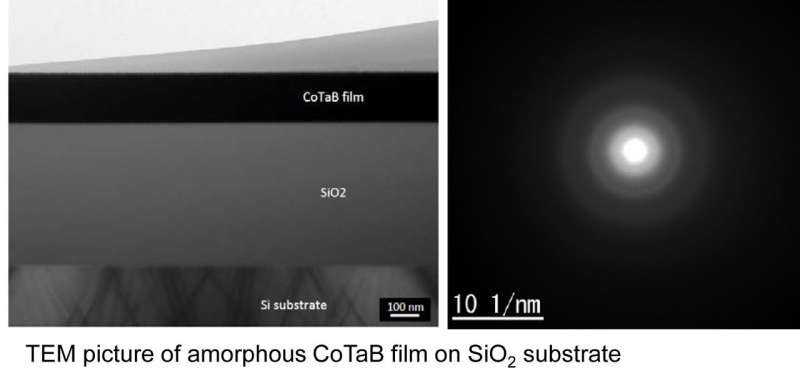Amorphous metallic glass for high-sensitivity MEMS microphones

Advanced microphones using microelectromechanical systems (MEMS) are capable of supporting new user interactions with "smart" devices, like chatting with Apple's Siri, or Amazon's Alexa. The key to achieving the high sensitivity desired for these microphones, you might be surprised to learn, is tied to the "admittance" or "compliance" of its membrane components.
Polysilicon is the material most commonly used as a membrane for microphone devices today. But, in general, single-crystal and polycrystalline-silicon-based devices are brittle and prone to fractures that can cause interior defects during the fabrication processes. This has lead researchers to search for a replacement material.
During the AVS 64th International Symposium & Exhibition, being held Oct. 29-Nov. 3, 2017, in Tampa, Florida, researchers from WPI-Advanced Institute for Materials Research/Micro System Integration Center at Tohoku University, in Japan, will present their work with a potential replacement material that shows promise for MEMS microphones: amorphous metallic glass.
"One of the most important specifications to evaluate these devices is signal-to-noise ratio (SNR)," said Mai Phuong Nguyen, assistant professor at Tohuku University. "SNR is a good indicator of the minimum sound level that a microphone can detect within a quiet environment."
Until now, most studies focused on improving the SNR, according to Nguyen, which is proportional to the "compliance" of the membrane. "But no significant results have been achieved, due to the limitations of polysilicon," Nguyen said.
Metallic glasses, however, share the properties of both metals and glasses. Like glasses, they have a "supercooled liquid region," in which the viscosity can be controlled.
"[T]heir amorphous structure means that metallic glasses are free of crystalline defects—dislocation, point defects, stacking faults, etc.," Nguyen said. "So metallic glasses possess high strength and low stiffness, which gives them the ability to store elastic strain energy and release it."
The MEMS fabrication processes are typically done at a temperature of 200 degrees C or higher, and the materials must undergo chemical corrosion during the stripping processes in lithography steps, which also etch for patterning or structuring of the device. "Thermal budgets and chemical resistance may potentially have a strong impact on device performance and this needs to be explored further," Nguyen said.
The group prepared a cobalt tantalum boron (CoTaB) amorphous metallic glass by a sputter technique, a simple method commonly used by the semiconductor industry. The final thickness ranges from 100 nanometers to several micrometers, controlled by simply changing sputter conditions. They were able to confirm the most important properties of metallic glass: an amorphous structure with metallic glass behavior.
"We also explored the mean and gradient stress, which appear to have a strong impact on the sensitivity of devices," Nguyen said. "And we further studied compressive and tensile stress under different deposition conditions, as well as their compatibility with MEMS manufacturing processes."
Microphones are already well established in a full range of consumer products. "But there is clearly room to increase their reach within the audio supply and value chain, which would enhance audio capabilities," Nguyen said.
Provided by Science and Technology of Materials, Interfaces, and Processing



















